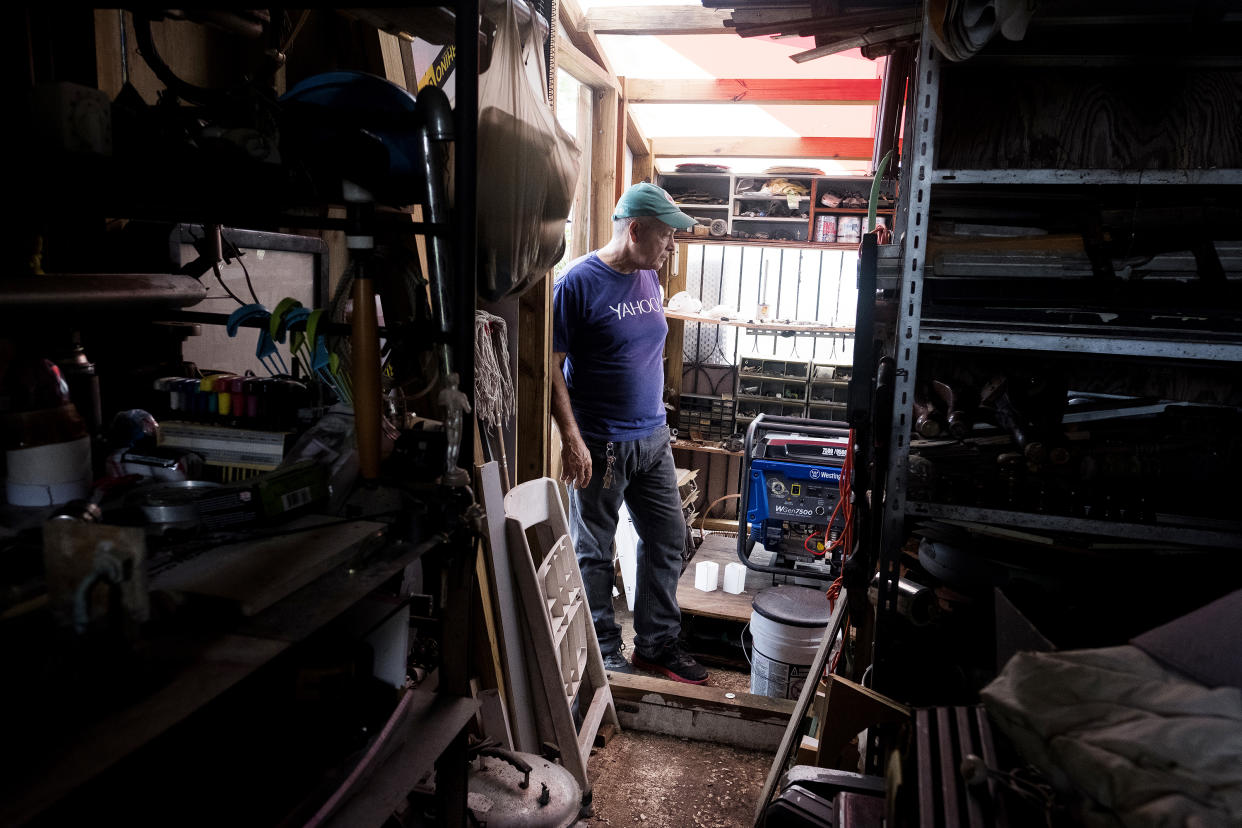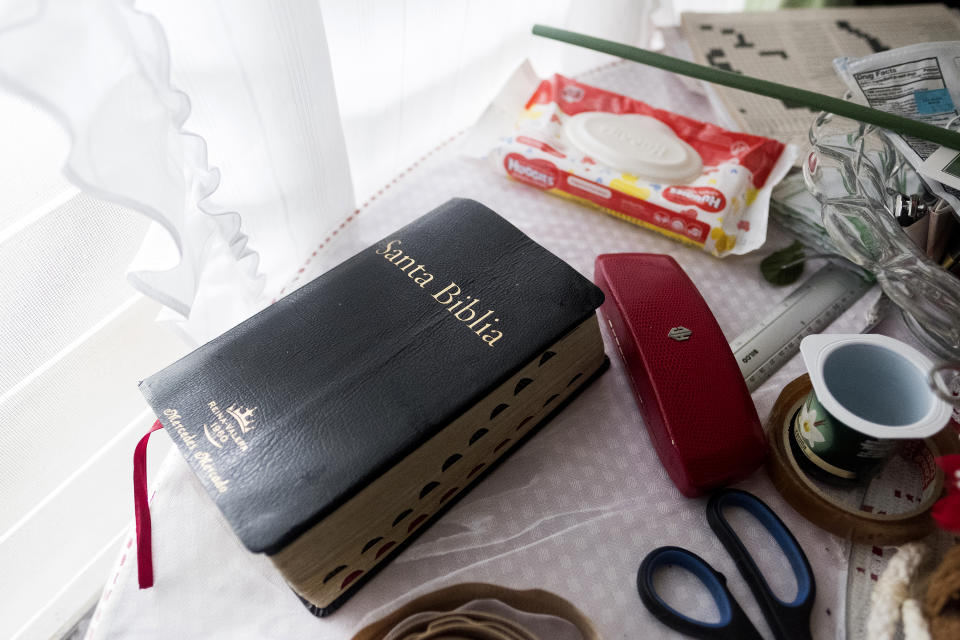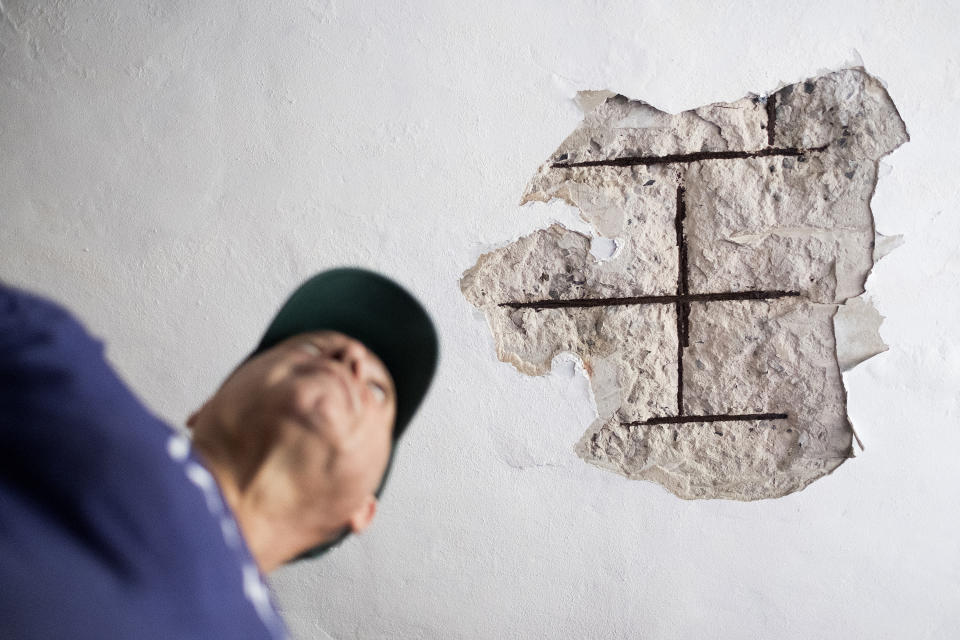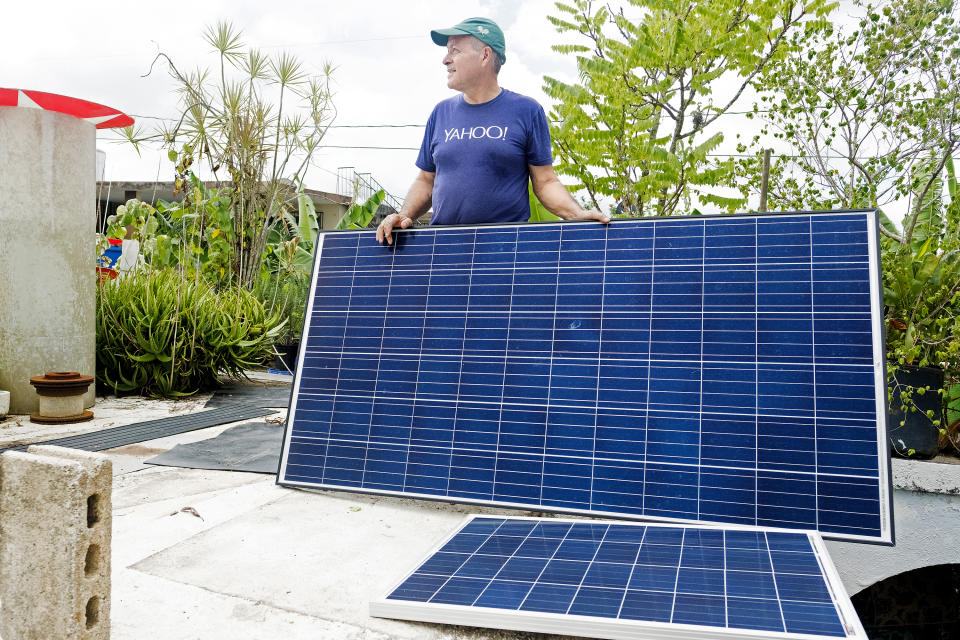After Hurricane Maria, a look back at the Vazquez family, lit by generator

Christmas marked 96 days since Jesse Vazquez’s house on Calle Alameda in Bayamon, Puerto Rico, lost power in Hurricane Maria.
The small generator his children brought him from New York back in October, when Yahoo News accompanied them on their journey, has since been supplemented with a larger one. In the three months since Maria first knocked out the power to the 3.4 million residents of Puerto Rico — who are U.S. citizens — these gas-powered machines have gone from rare commodity to backyard fixture, overpowering the neighborhood with a collective, constant drone.
“It’s intrusive, it’s an irritant. Everybody’s on edge because these things make a lot of noise,” Vazquez said recently. “I’m trying to get used to it, but I’m always glad when they turn off the generator next door.”

Vazquez guesses it might be a month before the lights come back on in his neighborhood — but really, he has no idea. He heard somewhere that it’s taking longer to restore power to homes where the wires run through the backyards rather than in the street — as is the case with his and most of the other homes on his block.
In the meantime, he can’t help but worry about the potential health hazards he and his neighbors may be exposing themselves to with the generators “not only from the exhaust but from the transfer of the liquid gasoline to the tanks. We’re inhaling that stuff.”
He’s also concerned by the fact that, beyond his house, most of the traffic lights in Bayamon are also still out.
“The intersections are a crazy free-for-all,” he said. “You gotta play chicken at every intersection.”

Though the restoration of several cell towers means Vazquez no longer needs to drive to the nearest shopping center or highway hotspot to get cell service, accurate information about the progress of the island’s recovery is still hard to come by — even with a good internet connection on the mainland.
According to Status.PR, the official website used by the Puerto Rican government to display the latest updates on the state of the recovery effort, power generation across the island has been hovering between 65 and 69 percent. But as CNN correspondent Leyla Santiago recently pointed out, “generation” does not necessarily mean distribution, and that percentage reported by the Puerto Rico Electric Power Authority, or AEE, doesn’t exactly reflect how many of the island’s residents have power.
“San Juan mayor tells me about 50% of municipality has power,” Santiago, who has been closely covering the fallout of hurricane Maria in her native Puerto Rico for the past three months, tweeted this week. “Utuado mayor tells me about 30% of his municipality has power. Yabucoa..0%.”

Even more misleading than the “power generation” statistic provided by the AEE is the map that accompanies it. The map shows all but nine of the island’s 78 municipalities colored in a light yellow to illustrate “areas that have been energized.” Among the municipalities in yellow is Bayamon, where Vazquez and his 89-year-old mother, Mercedes, have grown accustomed to life in the dark, dedicating their generator power to the refrigerators and fans to help them sleep.

Recent reports also suggest that the human impact of Hurricane Maria has been drastically underreported.
Ever since Maria made landfall on Sept. 20, knocking out power to the entire island of 3.4 million, the official death count from the Category 4 storm has been remarkably low. When President Trump visited Puerto Rico in early October, he told local officials they could be “very proud” that only 16 people had been reported dead so far as a result of the storm — making the controversial comparison to the more than 1,800 fatalities caused by Hurricane Katrina, which he called “a real catastrophe.”

Later that day, after Trump departed the island, the government announced that the official death toll had more than doubled to 34. Since then, the number has slowly climbed, reaching 64 earlier this month. But according to independent investigations by the New York Times and the Center for Investigative Journalism, the actual number of fatalities related to the hurricane is likely over 1,000.
Puerto Rico’s Gov. Ricardo Rossello had been a staunch defender of the official death count, but in response to these latest reports, he’s ordered a review of all the deaths that have occurred since Maria hit.

Though the magnitude of Maria’s devastation has yet to be fully calculated, the dire conditions created by the storm have prompted many to flee the island, accelerating a mass exodus to the mainland that had already begun in response to Puerto Rico’s financial crisis. According to the Florida Division of Emergency Management, more than 200,000 people from Puerto Rico arrived in Florida during the first two months after the storm. During that time same period, NBC News reported, 7,756 Puerto Rican students enrolled in public schools around the state.
Vazquez and his mother, however, are determined to stay put in Puerto Rico.
“Things are getting back to normal,” Vazquez said, noting that running water has returned to the house, and the lines of people that stretched across the parking lots of most major stores in Bayamon a couple of months ago have mostly dried up as supplies return to the shelves.

A few weeks ago, Vazquez said, an inspector from FEMA came to take a look at a portion of his roof that was damaged during the storm. They told him he wasn’t eligible for aid to repair the damage, but that he could appeal the decision.
“It’s kind of humiliating,” he said, explaining that he probably will forego the appeal process. “My mom feels more like that, because it’s like begging almost, for her. We don’t want anything for nothing.”
Still, Vazquez is optimistic that things might actually be on their way to improving. Last month, with the help of his son, Vazquez was able to purchase four solar panels for his roof, which he hopes will make him less reliant on the generator. He’d long been interested in solar power, but it took the hurricane to motivate him to search for affordable panels.

“One of the positives” of this experience, he said, is that “people are getting more creative in order to compensate” for the lack of amenities. “There’s a lot of inventing going on, a lot of seat-of-the-pants approach.”
“Although it caused all this distress, [Maria] did bring a lot of stuff to light and it did force a lot of people to go in certain directions that can be deemed progressive … to prepare and prevent.”
_____
Best of 2017 Yahoo News Features




